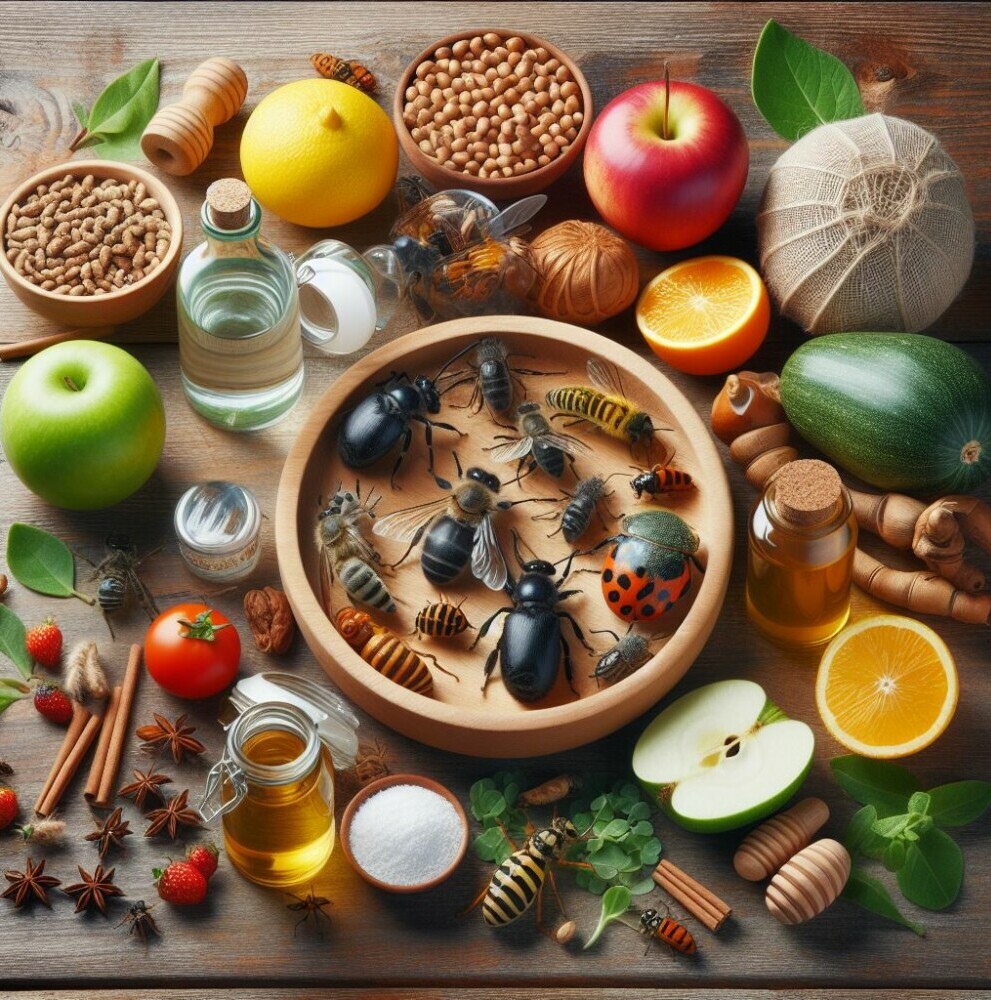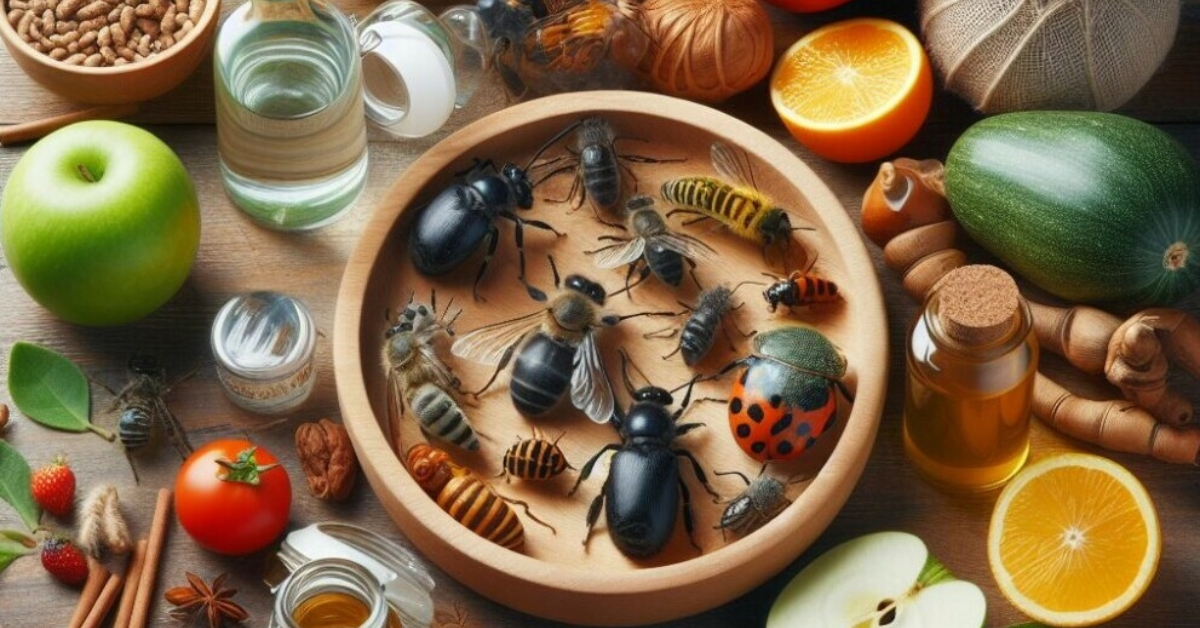 I will
I will
I will tell you a little secret: your garden can thrive without harsh chemicals, and the answer lies with the tiniest garden dwellers – insects. That’s right, those beneficial bugs can be your best defense against the pesky critters munching on your plants.
You’ll discover how powerhouse predators like ladybugs, praying mantises, and lacewings can be the key to maintaining a healthy garden. Ladybugs, for instance, have a voracious appetite for aphids, a shared garden pest. Praying mantises, those fascinating green hunters, take on a variety of bugs, acting as a natural cleanup crew for your garden.
But how do you get these helpful insects to stick around? You’ll need to ensure your garden is inviting. That will include planting various flowers and shrubs that provide nectar and pollen, which are necessities for these insects. Additionally, offering up spaces for them to lay eggs and enjoy shelter is just as crucial.
Now, with these garden allies, you’ll likely see a decrease in the population of harmful pests. But that’s not the whole story. This is also about creating an environment that sustains these beneficial creatures so they continue to work for you throughout the growing season. Supporting helpful insect populations contributes to pest management and boosts biodiversity, strengthening the garden’s resilience.
Choose something that resonates with you, whether fostering a specific type of beneficial insect you’re fond of or a variety of them for a more holistic approach. Remember, you can constantly adjust your strategy based on what works best for your garden ecosystem.
As we transition from relying on our six-legged friends to helping us keep pests at bay, we must recognize that not all insects must be attracted to be effective. Some plants are ready-made warriors equipped with repelling properties. In the next section, I’ll guide you through how your choice of plants can naturally keep pests at a distance while contributing to your garden’s overall health and beauty.
Harnessing Plant Power: Organic Repellents and Companion Planting
You’re probably well aware that certain plants can do more than provide a visual feast in your garden; they are also potent allies against unwanted pests. That makes organic repellents and companion planting an intelligent choice for natural pest control. It’s about turning your garden into a fortress without resorting to harsh chemicals.
Companion planting isn’t just a fancy term for gardeners keen on aesthetics; it’s a strategic move. You create a protective bubble around your more vulnerable plants by carefully choosing and placing plants that naturally disagree with pests. Think of it as having your garden bodyguards. For instance, marigolds have a scent that repels nematodes and can be an excellent neighbor for tomatoes that might otherwise fall prey to these soil-dwellers.
And there’s no need to limit your pest-fighting arsenal to living plants alone. You can whip up homemade organic repellents using common ingredients like garlic, chili pepper, or certain essential oils. Spritzing these concoctions onto your plants can keep pests at bay and ensure your garden remains healthy. Not only are you avoiding introducing toxins into your environment, but you’re also setting the stage for a flourishing, pest-resistant garden.
In the next segment, we’ll delve into the nitty-gritty of physical and manual defenses. From nets that shield your tender crops to the strategic use of your own two hands in pest management, there’s a lot you can do to safeguard your greenery from those pesky invaders.
Physical and Manual Tactics: Barriers and Hands-on Solutions
Gardening isn’t just about planting and watering; it’s a strategic battle against pests. But players like harsh chemicals don’t have to be part of the game. We can opt for physical barriers and manual solutions that protect our plants while maintaining the garden’s environmental integrity.
Consider this: A simple net or a row cover might be all you stand between your precious tomatoes and a world of hungry insects. Barrier methods such as these are non-invasive and, quite frankly, underutilized. They can prevent pests from ever reaching your plants without the need for any toxic agents. And when it comes to young seedlings, a collar made from recycled materials can deter crawlies like slugs and cutworms.
Now, don’t shy away from getting a little dirt under your fingernails. Regular garden patrols and picking off intruders like aphids or caterpillars can be incredibly effective — it’s hands-on, but it sends a clear message. Plus, you’ll get up close and personal with your plants, which is always an opportunity to check for other issues like fungal diseases or nutrient deficiencies.
Here’s an angle that’s often overlooked: the health of your soil. It’s the foundation of a robust garden, and a well-maintained soil ecosystem can suppress pest populations before they become a problem. Practices like crop rotation, adequate spacing, and proper watering can all contribute to a less hospitable environment for pests. And let’s not forget mulching — it’s not just about moisture retention; it can also be a physical barrier to block weeds that serve as pest hideouts.
Balancing the Ecosystem: Encouraging Biodiversity and Natural Predators
I will show why a balanced ecosystem is your ultimate ally in natural pest control. This isn’t just about planting a few flowers to attract bees; it’s about creating a thriving environment that supports a complex web of life.
You’ll learn about the vital role of birds, frogs, bats, and even certain insects in controlling pest populations. But these critters need the right environment to flourish.
That includes introducing various native plants, which often have better resistance to pests and diseases. These plants provide essential shelter and food for a host of wildlife species.
You can also construct habitats like birdhouses, bat boxes, and frog ponds that invite these natural predators into your garden. The chirps, croaks, and fluttering wings add life to your garden and help maintain its health.
Remember to include water features, like a simple birdbath or a small pond. Water is a critical resource for all living things, and providing it can significantly increase your garden’s biodiversity.
Cultivating your garden with an eye toward biodiversity isn’t just suitable for the plants; it’s a rewarding experience that connects you to the natural world. So, I hope you’ll embrace these practices to transform your garden into a self-regulating oasis.

